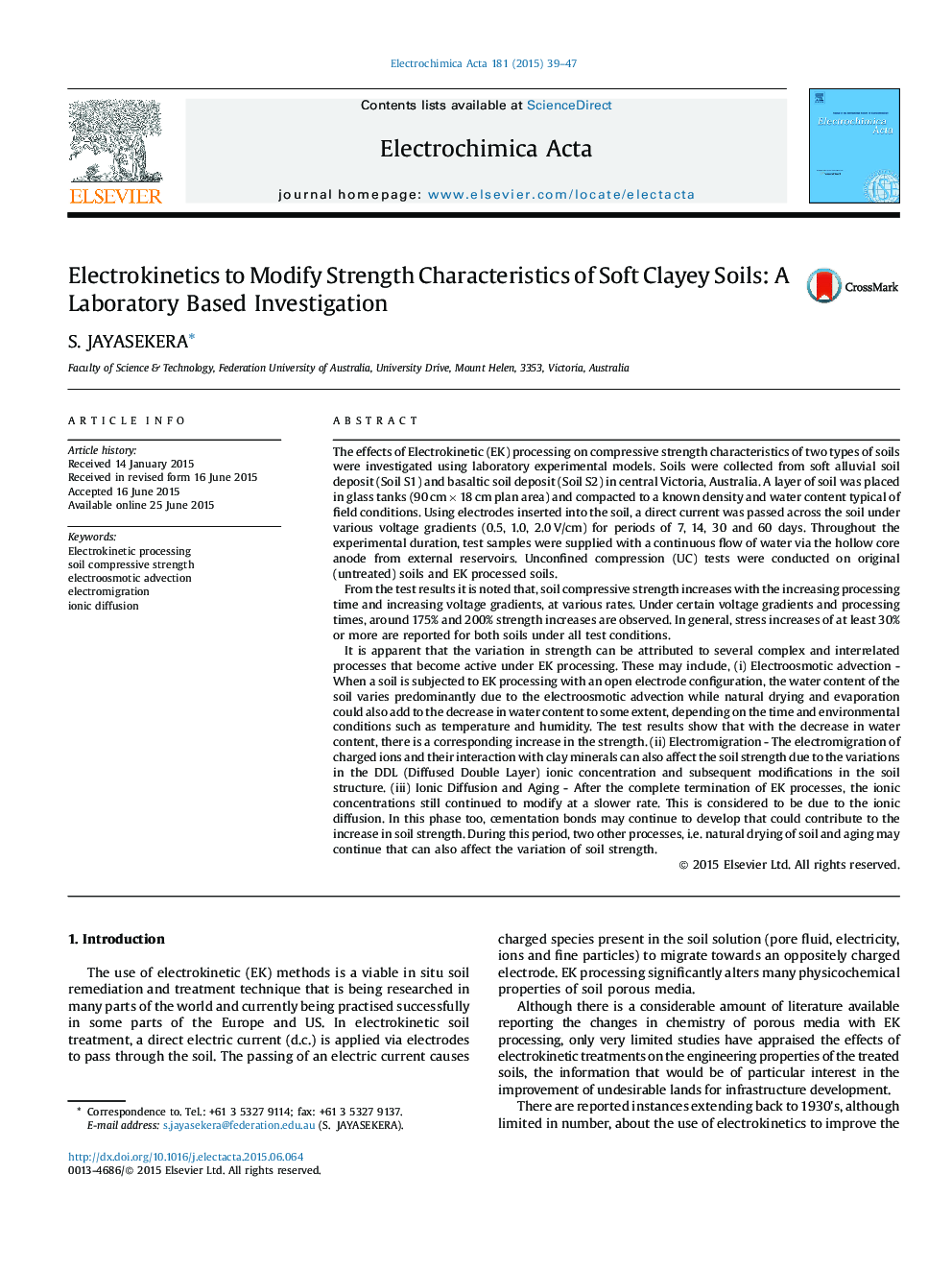| کد مقاله | کد نشریه | سال انتشار | مقاله انگلیسی | نسخه تمام متن |
|---|---|---|---|---|
| 183470 | 459550 | 2015 | 9 صفحه PDF | دانلود رایگان |

The effects of Electrokinetic (EK) processing on compressive strength characteristics of two types of soils were investigated using laboratory experimental models. Soils were collected from soft alluvial soil deposit (Soil S1) and basaltic soil deposit (Soil S2) in central Victoria, Australia. A layer of soil was placed in glass tanks (90 cm × 18 cm plan area) and compacted to a known density and water content typical of field conditions. Using electrodes inserted into the soil, a direct current was passed across the soil under various voltage gradients (0.5, 1.0, 2.0 V/cm) for periods of 7, 14, 30 and 60 days. Throughout the experimental duration, test samples were supplied with a continuous flow of water via the hollow core anode from external reservoirs. Unconfined compression (UC) tests were conducted on original (untreated) soils and EK processed soils.From the test results it is noted that, soil compressive strength increases with the increasing processing time and increasing voltage gradients, at various rates. Under certain voltage gradients and processing times, around 175% and 200% strength increases are observed. In general, stress increases of at least 30% or more are reported for both soils under all test conditions.It is apparent that the variation in strength can be attributed to several complex and interrelated processes that become active under EK processing. These may include, (i) Electroosmotic advection - When a soil is subjected to EK processing with an open electrode configuration, the water content of the soil varies predominantly due to the electroosmotic advection while natural drying and evaporation could also add to the decrease in water content to some extent, depending on the time and environmental conditions such as temperature and humidity. The test results show that with the decrease in water content, there is a corresponding increase in the strength. (ii) Electromigration - The electromigration of charged ions and their interaction with clay minerals can also affect the soil strength due to the variations in the DDL (Diffused Double Layer) ionic concentration and subsequent modifications in the soil structure. (iii) Ionic Diffusion and Aging - After the complete termination of EK processes, the ionic concentrations still continued to modify at a slower rate. This is considered to be due to the ionic diffusion. In this phase too, cementation bonds may continue to develop that could contribute to the increase in soil strength. During this period, two other processes, i.e. natural drying of soil and aging may continue that can also affect the variation of soil strength.
Journal: Electrochimica Acta - Volume 181, 1 November 2015, Pages 39–47